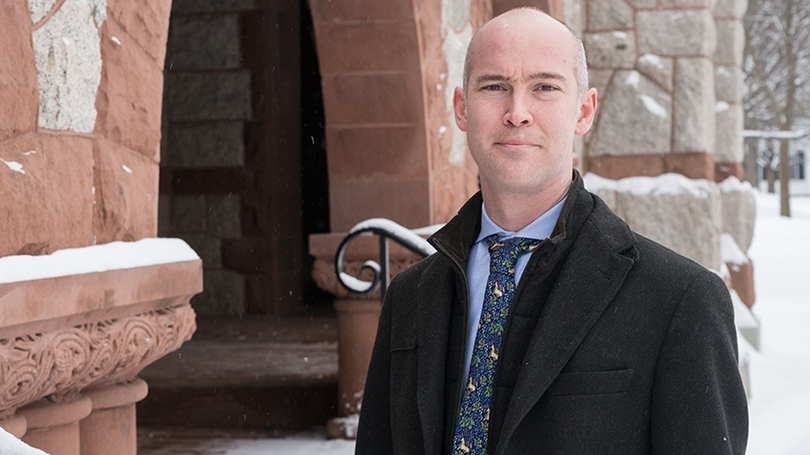
- Undergraduate
- Foreign Study
- Careers & Opportunities
- News & Events
- People
Back to Top Nav
Back to Top Nav
Back to Top Nav
In the late 19th and early 20th century, the Roman archaeologist Rodolfo Lanciani collected an enormous archive of Rome’s history—meticulously documenting the excavations of the city’s 3,000 years of continuous settlement.
Today, Lanciani’s archive is housed in a 15th-century palace (formerly also Mussolini’s headquarters), which is accessible only to a handful of scholars who make the journey to Rome to see it.
Now Assistant Professor of Art History Nicola Camerlenghi and his colleagues at the University of Oregon and Stanford University have scanned nearly 4,000 prints, paintings, and drawings from the collection—building a website to make them available to researchers and the public. The site, hosted at Stanford, was made possible by a grant from the Samuel H. Kress Foundation and generous support from Dartmouth’s William H. Neukom Institute for Computational Science. The Istituto Nazionale di Archeologia e Storia dell’Arte, which owns the collection, made the material available for this international collaboration of scholars.
“There’s an enormous wealth of material there from all different centuries,” says Camerlenghi of the online archive. “Any lover of Rome, professional or amateur, gets a kick out of looking at this stuff, image after image. It’s intoxicating—you just want to see more.”
The digital Lanciani archive project is just one part of a larger scholarly collaboration called “Mapping Rome,” for which Camerlenghi is a principal investigator, along with scholars from Oregon, Stanford, and Italy.
“There’s an enormous wealth of material there from all different centuries,” says Camerlenghi of the online archive. “Any lover of Rome, professional or amateur, gets a kick out of looking at this stuff, image after image. It’s intoxicating—you just want to see more.”
The digital Lanciani archive project is just one part of a larger scholarly collaboration called “Mapping Rome,” for which Camerlenghi is a principal investigator, along with scholars from Oregon, Stanford, and Italy.
For further information, go to https://news.dartmouth.edu/news/2017/10/3000-years-roman-history-click-mouse